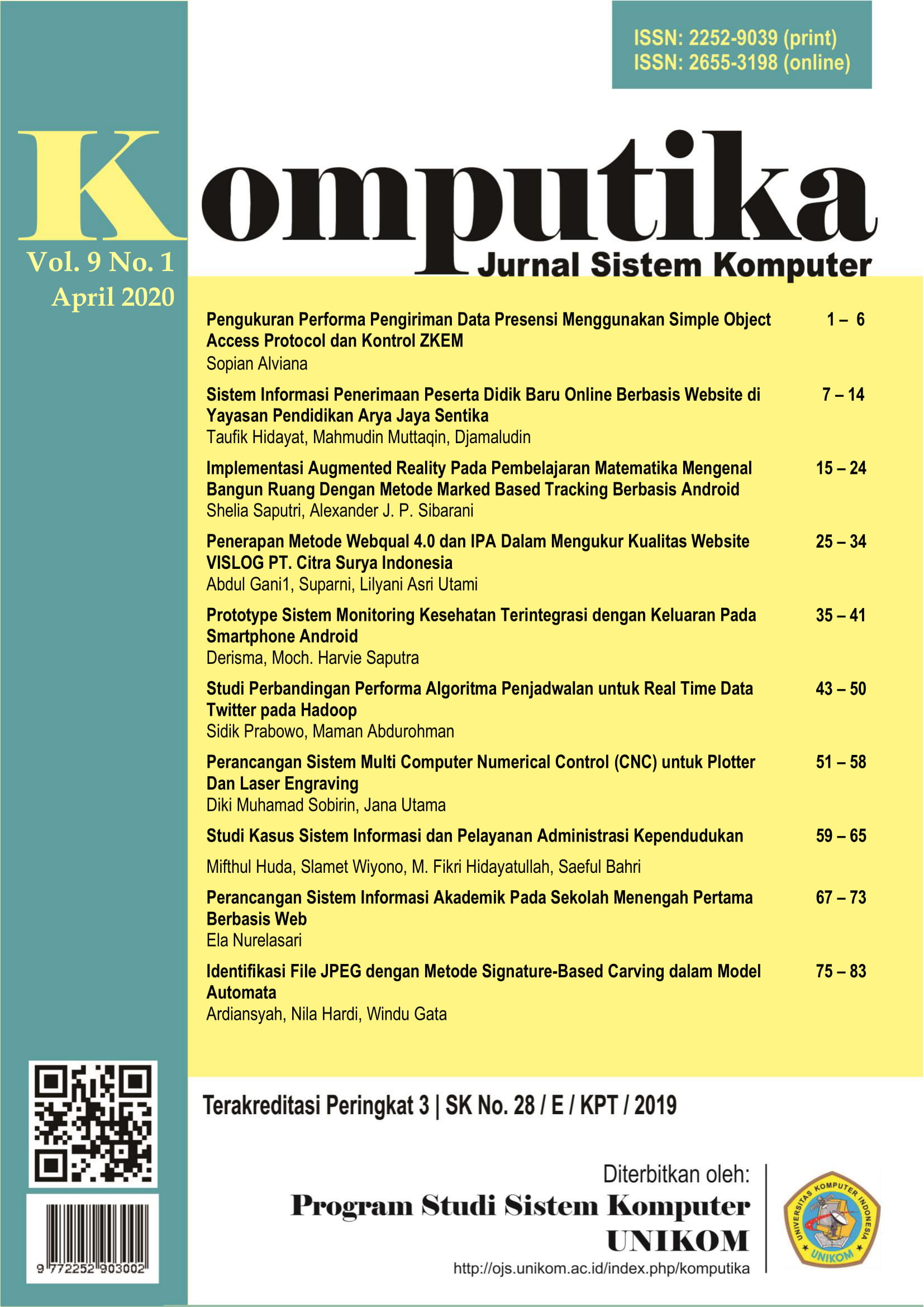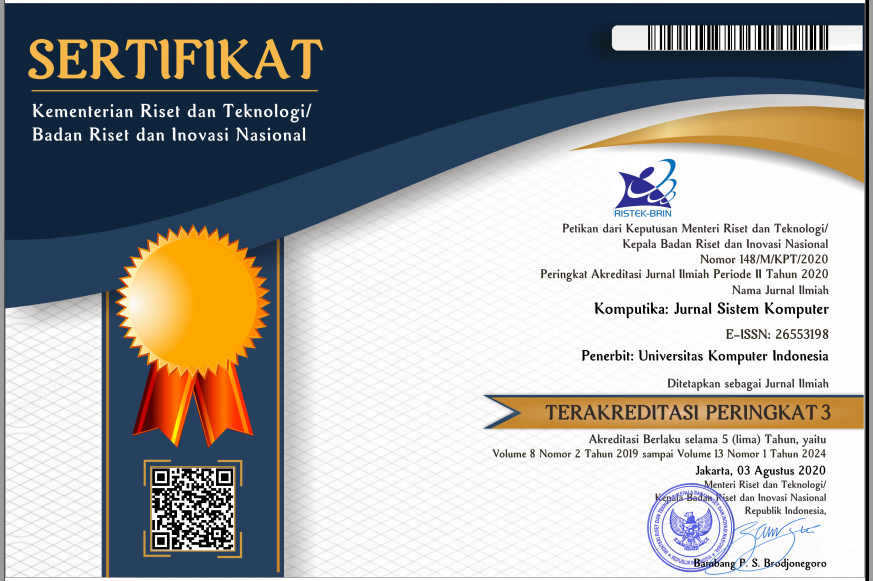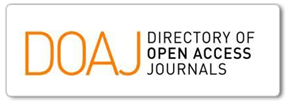Identifikasi dan Recovery File JPEG dengan Metode Signature-Based Carving dalam Model Automata
DOI:
https://doi.org/10.34010/komputika.v9i1.2733Abstract
ABSTRACT – The use of JPEG image formats is increasing along with the increase in digital photo production triggered by the emergence of smartphones and the development of social media. Even in 2017 it is predicted that each person will produce 1,600 digital photos in one year. This makes JPEG files play an important role in digital forensic processes so that many JPEG file identification and recovery methods are developed. This paper attempts to look at the process of identifying and recovering JPEG files with the Signature-Based Carving method, the simplest carving method, with a Finite State Automata (FSA) diagram model, a basic algorithm model in computational theory. The FSA model that was created was then tested using data in the form of a disk image made publicly available from DigitalCorpora.org. The result is that the FSA model can identify and recover JPEG files with the Signature-Based Carving method with certain terms and conditions, including unfragmented, full headers and footers, and no thumbnail or embedded JPEG files in the JPEG file.



















